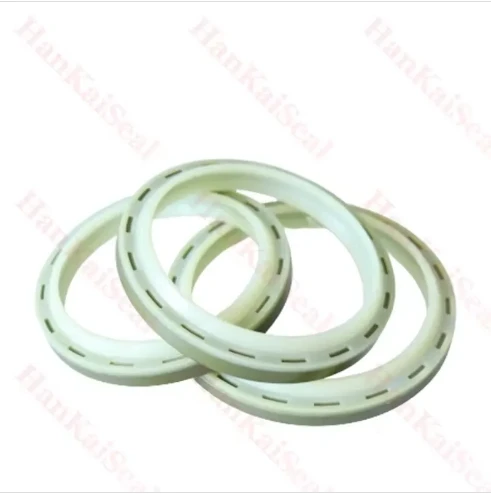Nov . 06, 2024 10:49 Back to list
Single-Acting Piston Seals for Enhanced Performance and Reliability in Hydraulic Systems
Understanding Single Acting Piston Seals Functionality and Applications
In the realm of mechanical engineering, seals play an essential role in ensuring the effective operation of various machinery and equipment. Among the different types of seals, single acting piston seals are particularly noteworthy due to their specific design and functionality. This article aims to explore the characteristics, applications, and benefits of single acting piston seals, highlighting their importance in modern engineering.
What is a Single Acting Piston Seal?
A single acting piston seal is designed to operate in one direction, providing an effective barrier that prevents fluid leakage while allowing the movement of a piston within a cylinder. Unlike double-acting seals, which can maintain pressure on both sides of the piston, single acting seals are optimized for situations where pressure is applied from only one direction. This makes them particularly useful in hydraulic and pneumatic applications where a piston is used to activate machinery or move components.
Design and Composition
Single acting piston seals are typically made from a variety of elastomers, such as nitrile rubber, polyurethane, or fluoropolymers, depending on the application requirements, including temperature and chemical resistance. The design of these seals generally features a lip that contacts the surface of the cylinder wall. This contact ensures a tight seal, preventing the escape of fluids while accommodating the movement of the piston. The geometry of the seal is crucial, as it affects its sealing performance and durability.
Functionality
The primary function of a single acting piston seal is to maintain pressure by preventing fluid from leaking past the piston. When hydraulic or pneumatic pressure is applied, the elastic nature of the seal allows it to deform and create a seal against the cylinder wall. This deformation is an essential feature, as it not only ensures a tight seal but also compensates for wear and tear over time.
When the pressure is released, the seal returns to its original shape, effectively resealing the piston for the next cycle. This one-directional sealing mechanism is critical in various applications, where consistent pressure retention is necessary for efficiency and performance.
single acting piston seal

Applications
Single acting piston seals are utilized in a wide range of industries, including automotive, aerospace, manufacturing, and construction. Common applications include
1. Hydraulic Cylinders In hydraulic systems, these seals are essential for controlling the movement of actuators, loaders, and other machinery. 2. Pneumatic Systems In pneumatic systems, single acting seals are employed in devices like air compressors and pneumatic actuators. 3. Automotive Engines Seals are used in engine components to prevent oil and fuel leaks, contributing to overall engine efficiency and performance.
4. Industrial Equipment Various industrial applications, such as presses and conveyor systems, rely on single acting piston seals for reliable operation.
Advantages
The use of single acting piston seals offers several advantages. Their design minimizes the risk of fluid leakage, which can lead to significant losses and inefficiencies. Furthermore, single acting seals are generally easier to install and maintain compared to their double acting counterparts. Their ability to provide reliable sealing with less complexity makes them a popular choice in many engineering applications.
Additionally, their durability and resistance to wear and chemicals enhance their longevity, reducing the need for frequent replacements and thereby lowering operational costs over time.
Conclusion
In conclusion, single acting piston seals are crucial components in various mechanical systems, ensuring the efficient operation of machinery across multiple industries. Their unique design and functionality allow them to provide effective sealing in one-direction applications, making them indispensable in modern engineering. Understanding the characteristics and benefits of these seals is essential for engineers and technicians involved in system design or maintenance, promoting both performance and reliability in their respective applications.
-
The Trans-formative Journey of Wheel Hub Oil Seals
NewsJun.06,2025
-
Graphene-Enhanced Oil Seals: Revolutionizing High-Pressure Oil Sealing
NewsJun.06,2025
-
Future of Hydraulic Sealing: Advanced Intelligent TCN Oil Seals
NewsJun.06,2025
-
Don’t Let a Broken TCV Oil Seal Ruin Your Day
NewsJun.06,2025
-
Bio-Inspired Dust Seals for Better Sealing Performance
NewsJun.06,2025
-
Biodegradable and Sustainable Hydraulic Seal Materials
NewsJun.06,2025
-
Top Oil Seal Solutions for Your Industrial Needs
NewsMay.22,2025
Products categories
















